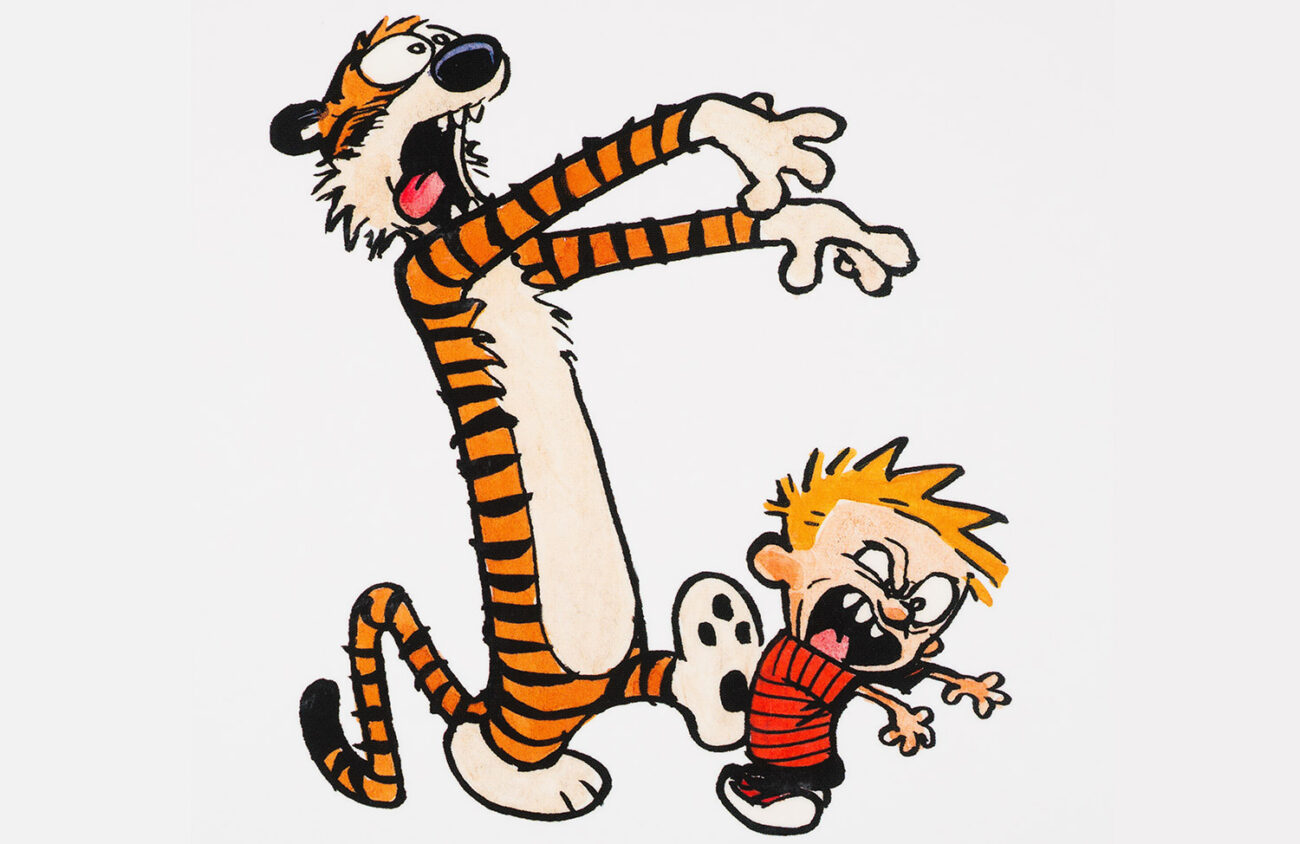Ask anyone you know, young or old, and they probably have memories of laughing at the antics of an adventurous 6-year-old boy named Calvin and his sardonic yet philosophical tiger friend, Hobbes, in Bill Watterson’s Calvin and Hobbes. Since its inception nearly 40 years ago, Calvin and Hobbes has asked its readers to question reality through lighthearted and humorous storytelling and has established itself as one of the most beloved comic strips of all time.
Until Feb. 2, Oregonians have a rare opportunity to see original Calvin and Hobbes artwork at the Jordan Schnitzer Museum of Art at the University of Oregon.
All of Watterson’s original Calvin and Hobbes artwork, aside from a few that he kept, have lived at the Billy Ireland Cartoon Library and Museum at Ohio State University since the strip ended. Until now, Billy Ireland is the only museum that has ever curated exhibitions of Calvin and Hobbes strips.
The exhibition at JSMA, It’s (Still) A Magical World, Hobbes, Ol’ Buddy is curated by associate professor of Comics and Cartoon studies at the University of Oregon, Kate Kelp-Stebbins. When Kelp-Stebbins first went to the Billy Ireland and asked the directors if she could do a Calvin and Hobbes show in Oregon, their response was “No way. Bill always says no. He’s very secretive. He doesn’t meet anyone. He doesn’t do anything like that,” she says.
In the years that the strip ran, Watterson fought the Universal Press Syndicate for the rights to his characters. Kelp-Stebbins says he turned down millions if not billions of dollars to prevent his beloved characters from turning into bumper stickers, stuffed animals and T-shirt designs.
“His idea is really that it cheapens the art and it takes away from the beauty and the imagination of the work itself to make it into something that you can buy and sell,” Kelp-Stebbins says.
Because Watterson is a private person and selective about the projects he is willing to be involved with, Kelp-Stebbins was shocked when the request to do the exhibit at JSMA was approved. “The fact that they reached out to Bill, and Bill said yes, was mind blowing. It had never happened before, and we never thought it was going to happen,” she says.
Jenny Robb, head curator of comics and cartoon art at the Billy Ireland Cartoon Library and Museum and caretaker of the Bill Watterson collection, says Watterson said yes because “he really does want people to have access to the original artwork and see it and engage with it.”
Kelp-Stebbins combed through all 3,300 available strips to select 33 for the exhibition — two daily strips and one Sunday strip from each year that comic ran, from 1985 to 1995. “We wanted to kind of show the progression of the strip, and also various themes, ways that it changed, ways that it stayed the same over time,” she says.
Since comic strips are intended to be reproduced in a newspaper, what you’re seeing is production art. Visitors can observe white out, sketch lines and erasure marks from Watterson’s hand that reveal the work behind every strip.
Walking through the exhibit, visitors not only get to experience a timeline of the original art but can also read about the history of the strip.
Kelp-Stebbins says she hopes people leave the exhibit with a sense of the world of wonder that makes Calvin and Hobbes so special. “Especially right now, when it’s a really hard time politically and socially, I really hope that people come in and get that imagination spark and think about what the world could be,” she says.
It’s (Still) A Magical World, Hobbes, Ol’ Buddy Selections of Original Art and Strips of Bill Watterson’s Calvin and Hobbes, 1985-1995,runs through Feb. 2 at the Jordan Schnitzer Museum of Art, 1430 Johnson Lane. Join Jenny Robb at the JSMA 5:30 pm Wednesday, Jan. 15, for a talk exploring Watterson’s masterful artistry and storytelling, the evolution of the strip, and his significance in the history of the art form.
